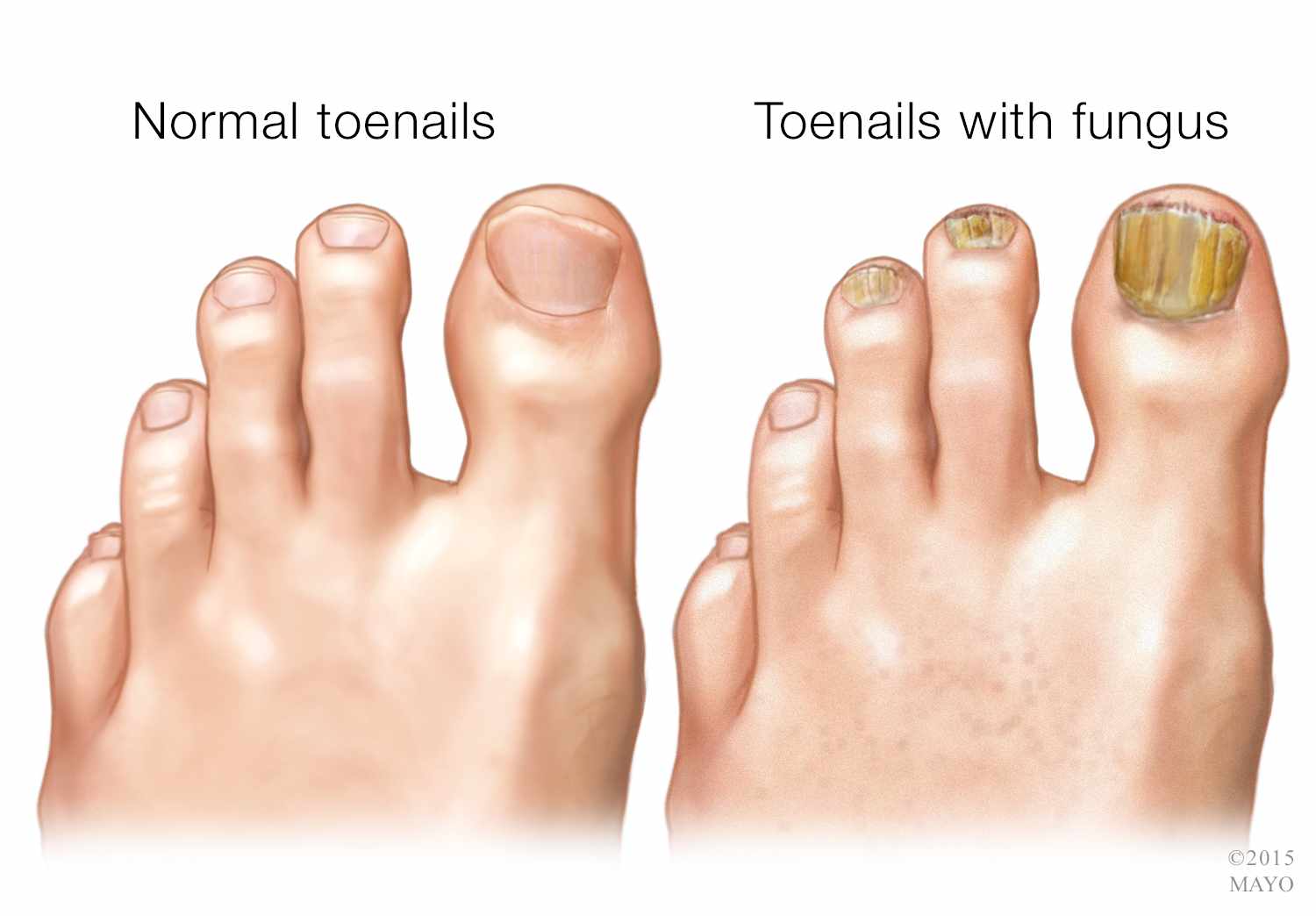As getting older brings about a series of diseases that greatly alter a person’s life, there are some fungal infections that affect the toenails. Fungal infections beneath toenails are very common in older age due to the decline in the growth rate. This will provide a highly suitable site to fungal infections enabling them to reside beneath and grows further. There are a number of treatments available both conventional as well as herbal but in some cases, it is not necessary to take anti-fungal for the treatment of such fungal infections.
Dermatophyte fungus is the main causative agent in case of toenail fungal infections. It is a microscopic organism that begins as a yellow or white spot underneath the tip of the toenail. But when the infection grows deeper, it may lead to discoloring and thickening of the toenail. The edges of the toenail also crumble. This infection is most likely to occur in your toenail and not in the fingernail because of the moist and warm environment where fungi can grow at a higher rate. The fungus could grow beneath or at the top of the toenail or in some cases it grows deep into the nail matrix making it difficult to treat.
Get The Best Toenail Fungus Medication Here
The toenail fungus is more likely to happen with aged people because of a decline in their immune system. Over time, the nails will become drier and brittle providing a suitable site for fungal infections. The toenail fungus infection can be treated by following key steps:
- Use topical ointments or creams to treat fungal infections because in most of the cases you do not require an oral anti-fungal.
- People who are healthy and young should not treat it by taking conventional medications as it exerts a series of side effects too.
- Buff the nail using a nail filer so that there will be less space for fungus to grow further.
- Always keep the nails trimmed to maintain the hygiene.
- Oral antifungals if required then should be taken for at least 6 months to completely cure the disease.
- Laser treatment is also available depending upon the condition of the disease and treatment required.
Whenever oral medication is required, then it must be taken for 6 months to a year so that the infected nail is replaced by a new nail. This new nail is free from fungal infections. In the case of mild infections, it is appropriate to keep in mind that only topical medications should be applied and nothing else is needed. Reinfection is likely possible when the fungal infection is not removed completely or maybe due to the physical environment that surrounds us. Therefore, it is fundamental to keep an eye on the toenail especially when you are at an older age so that it can be treated well and the possibility of reinfection can be diminished. Maintaining proper hygiene is also an essential factor that contributes a lot to your overall health especially during old age.
